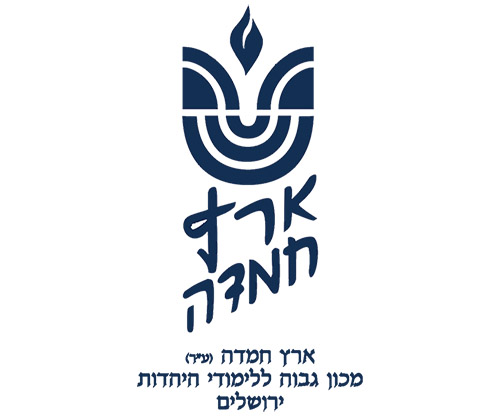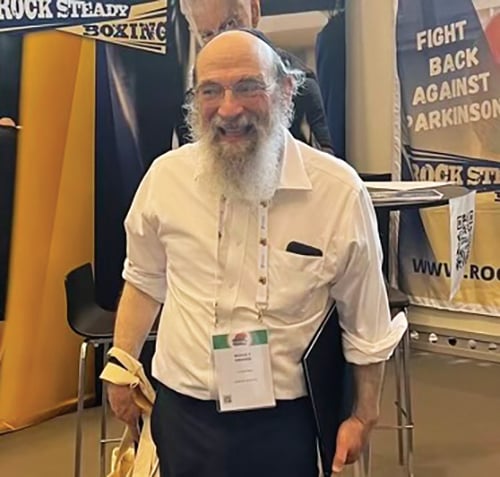
לעילוי נשמת
יואל אפרים בן אברהם עוזיאל זלצמן ז”ל
Question: What are the rules of when one does and does not do nefilat apayim (putting one’s head down and partially covering it) during Tachanun?
Answer: The sources and depth of discussion regarding this question are underwhelming, but the background is fascinating. Although no mishna mandates doing nefilat apayim in davening, several gemarot (including Megillah 22b and Bava Metzia 59b) refer to it as a known entity. Some used to do it as a more elaborate prostration than now practiced (see Megillah 22b).
The idea of not doing nefilat apayim without a sefer Torah comes from a short statement in the Rokeach (Tefilla 324), who cites as inspiration a pasuk regarding Yehoshua, who in a time of need, fell on his face and beseeched Hashem “before Hashem’s ark” (Yehoshua 7:6). The Beit Yosef (Orach Chayim 131) is unimpressed with the Rokeach’s assertion of its halachic basis. Although he does say, “If it is an accepted tradition, we will accept it,” he does not cite the Rokeach in the Shulchan Aruch. The Rama (Orach Chayim 131:2), though, does cite this requirement.
Concerning details, the Rama (ibid.) says that people davening in a courtyard that is open to a shul do nefilat apayim, as does an individual at home reciting Tachanun at the same time as the shul. We will not go into the details and permutations of these mainly uncommon occurrences (see Mishna Berura 131:13-14).
One common question is what needs to be present. The Rama writes that there should be an aron with a sefer Torah in it. While the pasuk mentions the aron of Hashem, the Rokeach mentions only a sefer Torah as being required and the Mishna Berura (131:11) says the sefer Torah is the determinant. Igrot Moshe (Orach Chayim, IV:21) refers positively to a case where the sefer Torah is kept in the room in a more secure place than the aron kodesh. Ishei Yisrael (25:36) cites Rav Shlomo Zalman Auerbach as positing that an empty aron kodesh that houses a sefer Torah only on days it is used suffices—apparently, even if the sefer Torah is in a different room on this day.
The Mishna Berura (ibid.) brings a machloket Acharonim on whether sifrei kodesh other than Torah scrolls justify doing nefilat apayim. Some say that sefarim are enough if it is the people’s regular place to daven (see Igrot Moshe, Orach Chayim, verse 20; Beit Avi IV:85), and/or if the sefarim are permanently there (Dirshu 131:17), perhaps in a bookcase (Halichot Shlomo, Tefilla 11:37).
The minhag is that Yerushalayim provides enough “before Hashem” sanctity to do nefilat apayim without any sefarim (see Siddur Olat Reiyah; Igrot Moshe, Yoreh Deah III:129). It is logically questionable whether and why this should apply outside the Old City (see Halichot Shlomo, ibid. 11).
Should one do nefilat apayim in a case of safek/machloket whether or not it is called for? One would think the stakes are low—What could be wrong with doing it when not called for? Is it a big deal to do Tachanun without it?
However, study of the sources of nefilat apayim (including gemarot, Rambam (Tefilla 9:5), and Shulchan Aruch (Orach Chayim 131) demonstrates that the raison d’etre of nefilat apayim is the body position—whereas, the specific words of supplication (which we call Tachanun) to be used are an afterthought (explaining lack of focus and greatly varied texts among eidot).
On the other hand, nefilat apayim is not a “why not?” practice. One may not do it at night (Shulchan Aruch, ibid. 3), even though Tachanun may be recited then (Mishna Berura 131:16). Although the Shulchan Aruch mandates nefilat apayim, in recent times, most Sephardim say Tachanun without nefilat apayim because of kabbalistically-based fear for one’s life if he does it improperly (see Yalkut Yosef, Orach Chayim 131:16).
Like the 13 middot (the two are often paired), nefilat apayim makes for very powerful prayer (see story in Bava Metzia 59b). But it is viewed as a “nuclear option,” which needs the right conditions (see Shulchan Aruch, ibid. 8). Therefore, it is appropriate to take a moderate approach (not overly lenient or stringent) in deciding between opinions.
This column is written by Rabbi Daniel Mann on behalf of the Eretz Hemdah Institute in Jerusalem, which trains dayanim and has many projects on behalf of Klal Yisrael, including its Ask the Rabbi service in conjunction with the OU. Rabbi Mann is a Dayan at Eretz Hemdah, a senior member of the Ask the Rabbi project, and author of its Living the Halachic Process series. He is also a Ram at Yeshiva University’s Gruss Kollel in Israel.













